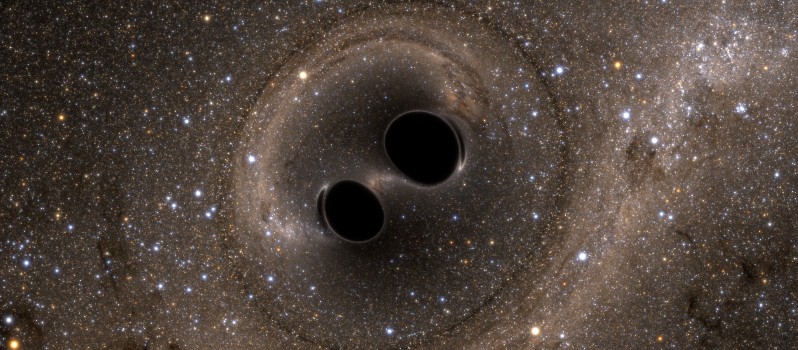Pretty Posts
- Beautiful Photo Manipulations and Reflected Landscapes
- Flowers, Flowers Everywhere: Springtime Around the World
- Leonardo DiCaprio Gets An Oscar At Last, Uses His Acceptance Speech to Discuss Climate Change
- The Evolution of James Bond’s Suits
- Andrés Gallardo Albajar’s Photography Showcases Architectural Variety in Lithuania
It was Albert Einstein’s general theory of relativity, published more than a century ago, that famously predicted the existence of gravitational waves. Scientists have been trying to detect them for the past 50 years to no avail, until now. In a breakthrough discovery announced just 24 hours ago at the National Science Foundation meeting in Washington D.C., scientists were able to confirm Einstein’s prediction – they had at long last detected gravitational waves in the universe.
The distant waves were spotted on the morning of September 14th 2015 by twin Laser Interferometer Gravitational-Wave Observatory (LIGO) detectors located in Washington, and Louisiana, USA. Based on the signals detected, LIGO scientists concluded that the waves originated from the violent merger of two black holes 1.3 billion light years from Earth.
 Image courtesy of The SXS (Simulating eXtreme Spacetimes) Project
Image courtesy of The SXS (Simulating eXtreme Spacetimes) Project
What are gravitational waves?
Gravitational waves are ripples in spacetime that move outwards from the source of mass, in this instance the colliding black holes. It is mass that causes the curvature of spacetime; the more mass, the more curvature. Under certain conditions this can become a gravitational wave, such as two objects orbiting as the planets orbit the sun, or this gigantic collision of black holes, which created a much more powerful wave. To put it simply, gravitational waves form as changes in the curvature of spacetime occur.
Here is a simulation of the merger of two black holes:Video courtesy of NASA/C. Henze
The detection of these long-hypothesized gravitational waves is an event of astronomical historical importance, and has shed a new beam of light on the universe, and the seemingly unattainable truths surrounding its, and our, existence.
Preview image courtesy of The SXS (Simulating eXtreme Spacetimes) Project







Leave a Reply